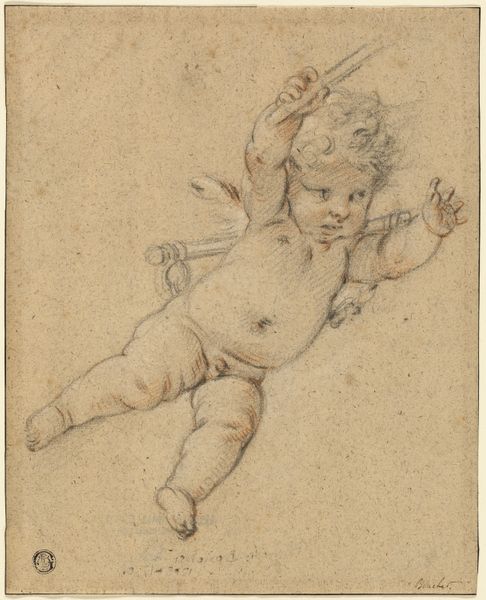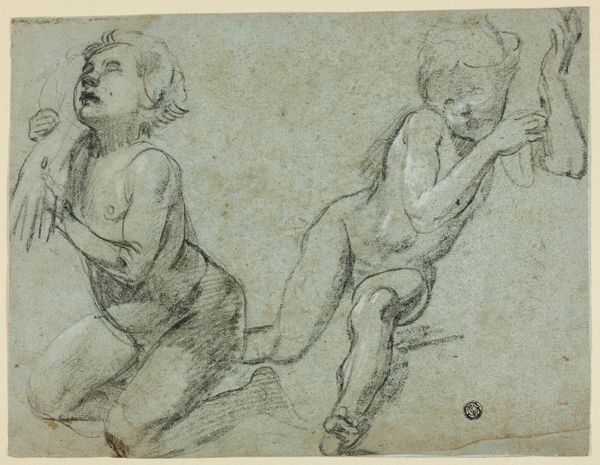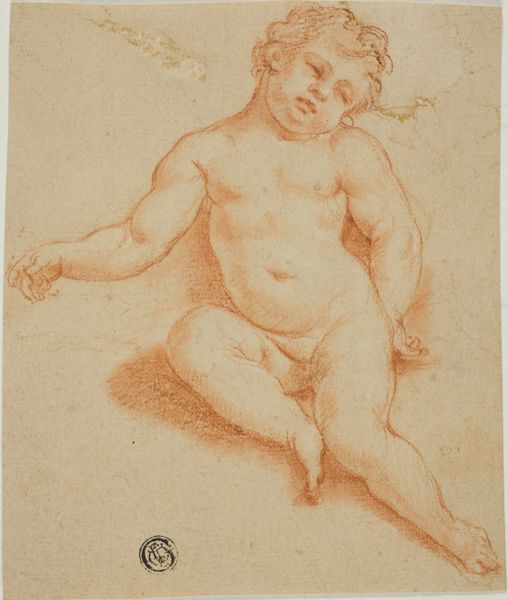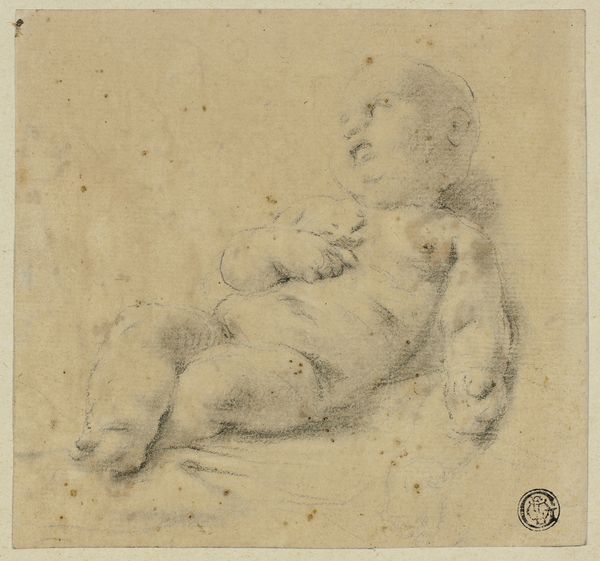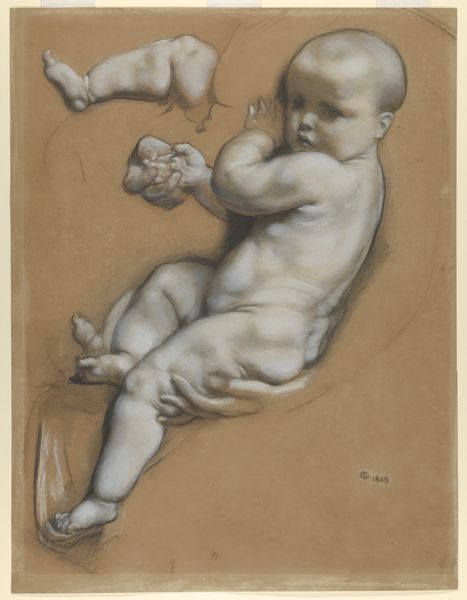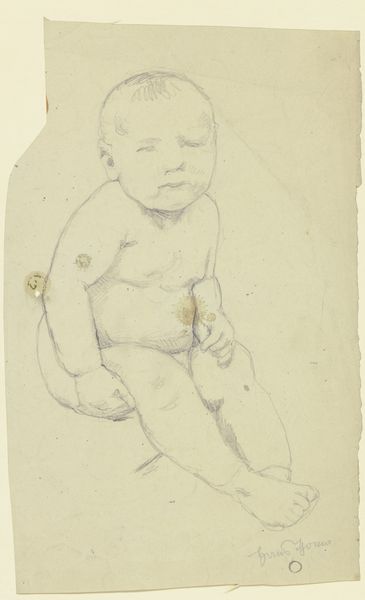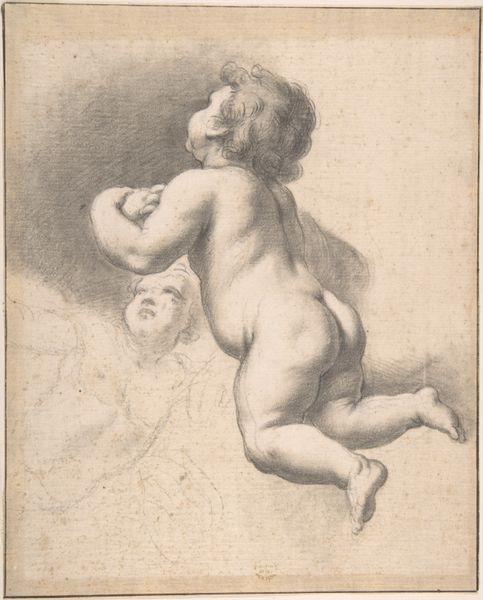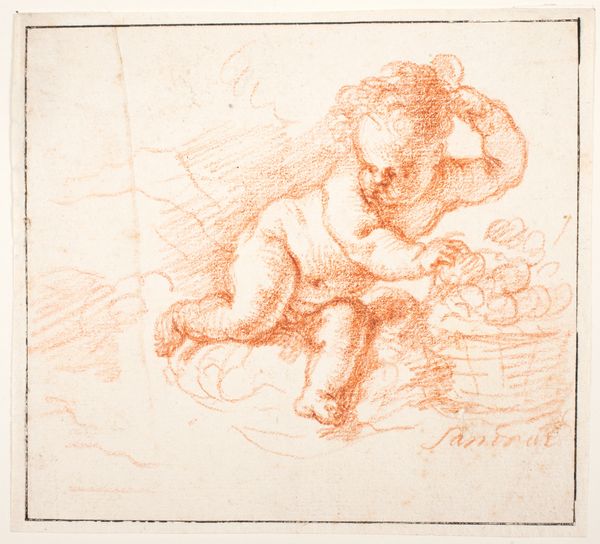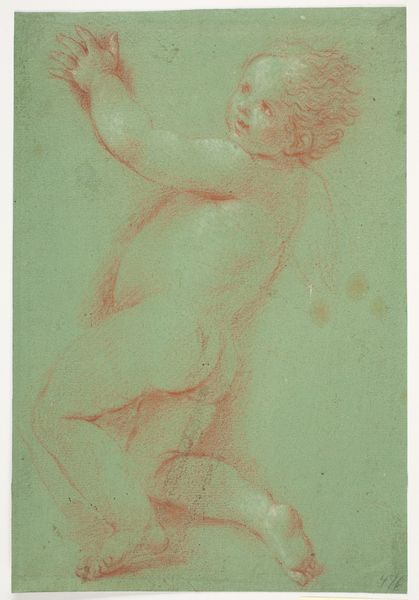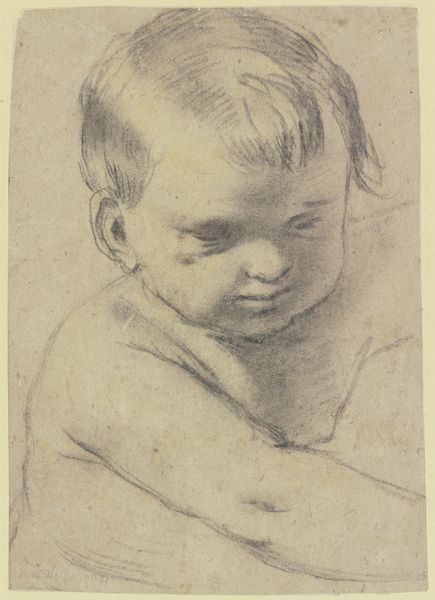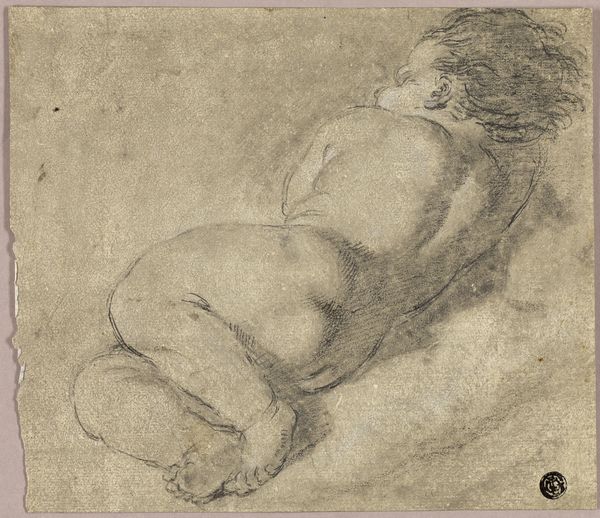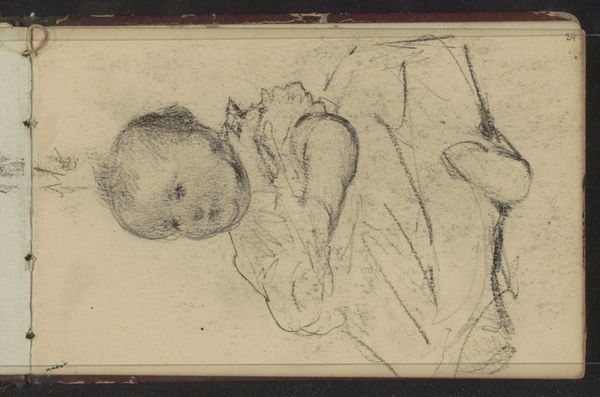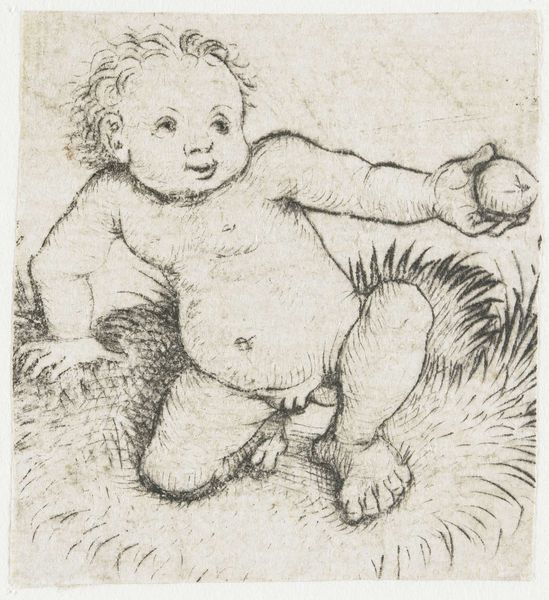
drawing, pencil
#
pencil drawn
#
drawing
#
figuration
#
11_renaissance
#
pencil drawing
#
pencil
#
nude
Dimensions: 5 3/8 x 5 11/16 in. (13.65 x 14.45 cm) (sheet)
Copyright: Public Domain
Curator: What strikes me first about this preliminary study by Federico Barocci, executed in pencil between 1561 and 1563, is the sheer vitality of it. Editor: I agree. The gray paper, combined with the sketchy pencil strokes, creates this ghostly, almost ethereal impression, as though this chubby figure is just materializing before our eyes. Is this dynamism related to Barocci's typical working methods? Curator: Precisely! He was known for creating numerous preparatory drawings and studies when devising his compositions, often experimenting with light and movement, striving for a certain *moto*. And it certainly manifests here. We see this sense of anticipation; there is tension in its poised stance. Editor: Do you find something problematic, though, about our fascination with the naked child, a common, sanitized vision? Does that sanitization somehow serve to distract us from more meaningful issues like societal neglect? Curator: The image of the *putto*, as Barocci depicts, has complex historical and cultural roots in ancient Greco-Roman art and was adapted throughout the Renaissance to convey notions of divine love, innocence, and beauty. As the name signifies, its etymology reaches to ‘puer,’ or boy, a reclaiming and idealizing, no? However, I agree that considering contemporary ethics about depictions of the human form are crucial when analyzing it. Editor: Indeed, we need to acknowledge our perspective today even when dealing with canonical work from the past. What is visible, who makes it so, and who is unseen and rendered mute? I appreciate the dynamic posture you mentioned earlier, even though there is tension about such themes in these images. Curator: And this tension is worthwhile. Barocci used sketches like these to construct narratives, in ways to depict action. Editor: Right. I was going to conclude this work provokes contemplation about both aesthetics and ethics of image-making across vast spans of time. Curator: Well said. The artwork reminds us of the beauty and the questions images should bring up in different settings, historically, or today.
Comments
No comments
Be the first to comment and join the conversation on the ultimate creative platform.
